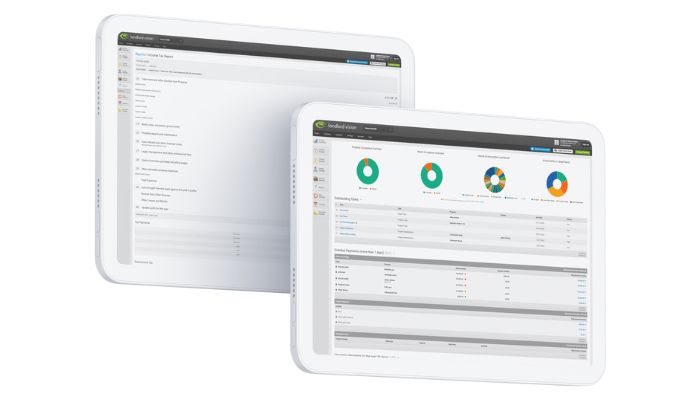
If you’ve been letting out your property for some time, you’ll know lots of things can change with your tenancies. Landlord Vision can help to keep a track of these changes and in this post, we’re showing you how.
Changing Rent in Landlord Vision
If the rent has gone up (or down) you can add this to the tenancy. Click on the Change Rent button and select the date from which the change takes effect and then add the new rent amount. Landlord Vision will start raising invoices for the new rent amount from the date that you select.

Note: make sure that you select the correct date, otherwise you could end up changing older rents that have already been paid.
You can also change the rent day using this method as well. After clicking Add Another Payment Rule, enter the rent amount and the date that the regular payments will now start from. Landlord Vision will raise an adjustment invoice for the period in between and suggest a pro-rata rent amount based on the annual rent. You can either use this or change it for one of your own.

Adding a Tenant Mid Tenancy in Landlord Vision
If an additional tenant moves in partway through the tenancy, you can add another person to the tenancy. On the Edit Tenancy page, click Add New Tenant and fill in the details. If the tenant isn’t paying rent, ensure the rent amount is zero. If they are, then set their rent amount and the date that they start paying rent from.
How to Indicate to Landlord Vision That a Tenant has Left
There are two options here:
- On the Edit Tenancy page, click Add Another Payment Rule for the tenant who is leaving, put in their last date as the Start Date and set the rent to zero (if they were paying rent). This will stop the software from raising invoices for this person, although they will still continue to appear on the list of tenants in the property.
- Expire the tenancy on the day the tenant moved out and set up a new one with the new tenant list.
Extending the Length of a Tenancy in Landlord Vision
This is what to do if a tenancy has reached its expiry date, but the tenant wants to continue. Again, you have two options, both are under Main Tenancy Details:
- Change the tenancy to periodic so that the software will continue to produce regular invoices.
- Change the expiry date to another date in the future, say six months or a year, depending on how long you have granted the extension for.
Ending a Tenancy in Landlord Vision
When a tenant wishes to leave and be replaced with a new tenant this would mean the end of their tenancy. Once you know when your tenant is leaving, set an Expiry Date for the tenancy. This will stop the software from raising invoices and the tenancy will show as expired once the Expiry Date has passed.
The End Date and the Expiry Date are two different things. The End Date is simply the fixed term period (if there is one) and then you can choose what happens at that end date, whether it expires or continues.
It is not recommended to delete a tenancy once it is finished unless you are absolutely sure that you no longer need this data. Deleting a tenancy will remove data from your reports, potentially making them inaccurate. It is much better to expire them instead.
You can then set up a new tenancy with the new tenant and so long as the Start Date of the new tenancy is after the Expiry Date of the old one, they will not count as two tenancies for charging purposes.
There you have it, that’s all you need to know about making updates to your tenant details in Landlord Vision.



